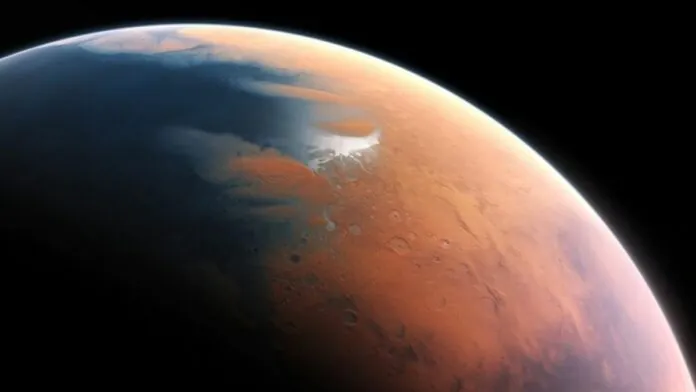© ROOT-NATION.com - Use of content is permitted with a backlink.
In the coming months, two Mars spacecraft from NASA will have an unprecedented opportunity to study how powerful solar storms can affect spacecraft and future astronauts on the Red Planet.
This is because the Sun enters a period of peak activity called solar maximum, which occurs approximately every 11 years. During solar maximum, the Sun is particularly prone to “fire tantrums,” including solar flares and coronal mass ejections.

Earth’s magnetic field largely shields our home planet from the effects of these events, but Mars lost it long ago, making it more vulnerable to energetic particles from the Sun. How intense is solar activity on Mars? Researchers hope that the current solar maximum will give them a chance to find out and prepare to send humans there.
“As for people and equipment on the surface of Mars, we do not have a clear picture of the radiation exposure during solar activity,” say scientists from NASA’s MAVEN orbiter team. It observes radiation and solar particles from high above Mars. A planet’s thin atmosphere can affect the intensity of particles when they reach the surface, and that’s where the Curiosity rover comes into play. Data from Curiosity’s Radiation Assessment Detector helped scientists understand how radiation breaks down carbon molecules on the surface. The instrument also gave an idea of the level of radiation protection astronauts can expect to receive by using caves, lava tubes or rocks for protection.
When a solar flare or storm occurs, scientists look at both the number of solar particles and how energetic they are. When MAVEN detects a large solar flare, the orbiter team notifies the Curiosity team so they can monitor changes in the data. Both missions can even collect a time series, measuring changes down to half a second as particles enter the Martian atmosphere, interact with it, and hit the surface.
The NASA MAVEN mission also operates an early warning system that lets other Mars spacecraft teams know when radiation levels are starting to rise. The warning allows missions to shut down instruments that may be vulnerable to solar flares.

Studying the peaks of solar activity will not only help keep astronauts and spacecraft safe in the future but may also help us understand why Mars went from a warm, wet world to an icy desert. Although there is little water left – mostly ice below the surface and at the poles – some still circulate in the atmosphere as vapour. Scientists wonder if global dust storms help eject this water vapour, lifting it high above the planet. One theory is that this process could explain how Mars got to its current state. If a global dust storm occurs at the same time as a solar storm, it will provide an opportunity to test it.
Read also:
- A NASA telescope has spotted a cold brown dwarf
- The NASA Juno probe photographed mountains and a lava lake on Jupiter’s moon Io


